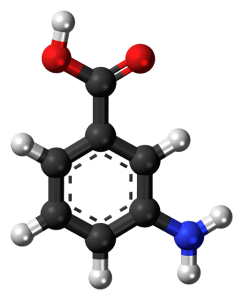Methylmalonic Acidemia
What is methylmalonic acidemia?
Methylmalonic acidemias are a subtype of organic acidemias that make the body unable to process certain proteins and fats properly. They are caused by an enzymatic defect in the metabolism of four amino acids: methionine, threonine, valine and isoleucine. This causes an unusually high level of acid in the blood and body tissues. The onset of methylmalonic acidemias usually occurs in the first few months of life. They occur at a rate of approximately 1 in 50,000 to 1 in 100,000 births.What are the symptoms of methylmalonic acidemia?
Symptoms may include:- Drowsiness
- Vomiting
- Acidosis (overproduction of acid in the blood)
- Dehydration
- Developmental delay
- Respiratory distress
- Weak muscle tone
- Seizures
- Enlarged liver
- Mental retardation
- Coma
- Abnormally high amounts of methylmalonic acid, ketone bodies, and/or ammonia in the blood and urine
- Low concentrations of white blood cells, red blood cells, and blood platelets
- Low blood sugar
What causes methylmalonic acidemia?
Methylmalonic acidemias are inherited as autosomal recessive traits. Human traits are inherited from one’s father and mother. They each contribute a gene, which interacts with the other. In recessive disorders, the condition does not appear unless a person inherits the same mutated gene for the same trait from both parents. Mutations in the MUT, MMAA, MMAB, MMADHC, and MCEE genes cause methylmalonic acidemia. About 60 percent of the cases are caused my mutations in the MUT gene. This gene carries instructions for creating the enzyme methylmalonyl CoA mutase. This works with vitamin B12 (cobalamin) to break down amino acids, lipids and cholesterol. When the MUT gene mutates, it reduces or alters the enzyme production in the body, which then prevents these molecules from being broken down properly. This results in potentially toxic compounds accumulating in the body’s organs and tissues, which then causes the symptoms of methylmalonic acidemia.How is methylmalonic acidemia diagnosed?
Methylmalonic acidemia is diagnosed using the following procedures:- Before birth, by:
- Measuring the concentration of methylmalonic acid in amniotic fluid
- Amniocentesis: taking and analyzing a sample of fluid surrounding the developing fetus
- Chorionic villus sampling (CVS): Removing and examining the tissue from a portion of the placenta.
- At birth, through expanded newborn screening with tandem mass spectrometry
- Clinical evaluation
- Detailed recordings of patient and family medical history
- A variety of specialized tests
- Laboratory studies of white blood cells and cultured skin cells
What are the treatments for methylmalonic acidemia?
Methylmalonic acidemia treatment includes, but is not limited to:- Carefully controlled, low-protein dieting that avoids the amino acids isoleucine, valine, threonine and methionine
- Medications
- Antibiotics
- Genetic counseling
- In some cases, organ transplants
Where can I find out more about methylmalonic acidemia?
Methylmalonic Acidemia Articles

A Potential Methylmalonic Acidemia Therapy Will be Developed Under the FDA’s START Pilot Program
Jessica Lynn
July 8, 2024
Read More »


FDA Lifts Clinical Hold on LB-001 IND for Methylmalonic Acidemia
Jessica Lynn
May 16, 2022
Read More »

New Technology Found To Be Better Treatment for Hereditary Tyrosinemia Type 1 and Wilson Disease
Trudy Horsting
November 9, 2021
Read More »

New Breath Test Aids in the Treatment of Methylmalonic Acidemia
Kendall Mason
April 12, 2021
Read More »


New Investigative Therapy for Methylmalonic Acidemia and Propionic Acidemia is Making Regulatory Progress
Trudy Horsting
August 3, 2020
Read More »

Company Receives Clearance to Conduct Trial for Propionic and Methylmalonic Acidemia
James Moore
June 25, 2020
Read More »



